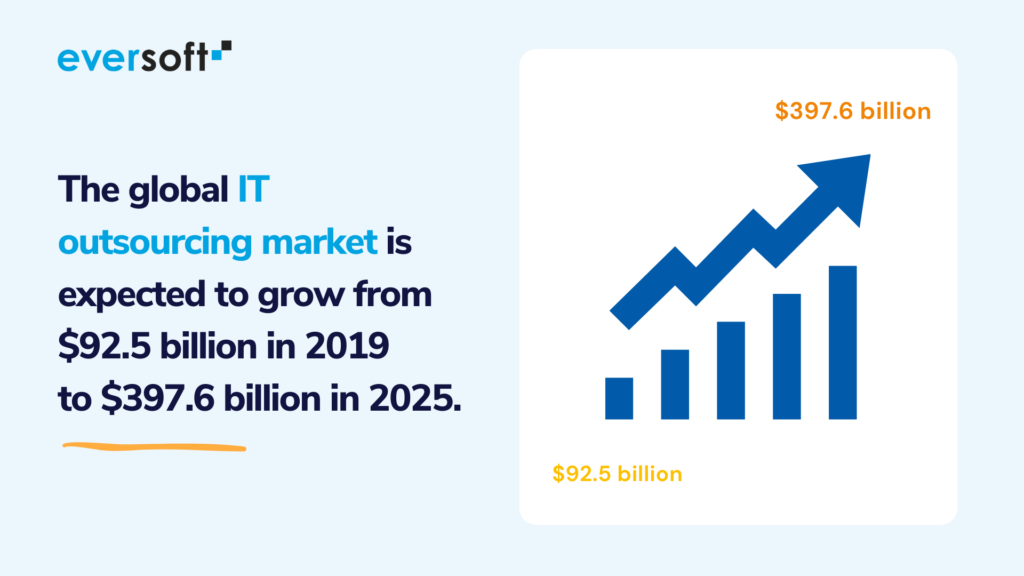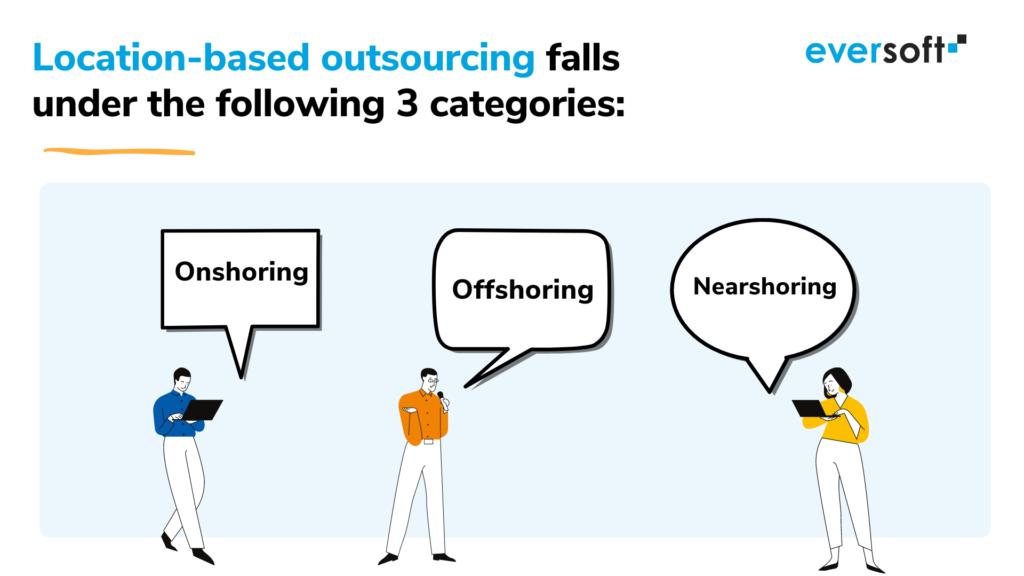The CIO Challenge: How to Choose the Right Type of Outsourcing Partnerships
Increasing consumer expectations, ever-rising competitive pressures, and fast-paced technological changes are all driving the digital transformation process in the current business landscape. This means that it’s no longer about the big beating the small, instead it’s the fast beating the slow. Thus, an increasing number of firms are considering IT outsourcing as a means to pick up the speed. It’s no wonder that the global IT outsourcing market is expected to grow from $92.5 billion in 2019 to $397.6 billion in 2025.

With a wide range of potential tech partners pitching you at the same time, however, outsourcing software development can be a daunting task. To simplify the process for you, we’ve come up with the following tips:
How to Choose the Right Outsourcing Partner
1. Define Your Project Requirements
Before you even begin your search of the ideal tech partner, paint a picture of what your destination looks like. By defining your goals and possessing a good idea of your project requirements, you’ll have a clear direction to follow as well as a better idea about the type of partner you need. You’ll know whether you really need a partner, or an advisor or assistant would do.
When exploring your outsourcing providers, think about what you expect from the relationship and what skills would you need for your project. Some providers offer a complete solution, providing consultants, designers, coordinators, testers, etc. They may even offer insights into data science or machine learning. Others won’t go beyond software development at all. Ultimately, it all comes down to your underlying needs. Your project needs will determine which outsourcing provider you want to go with.
2. Determine the Type of Outsourcing You Need
There are multiple ways to outsource software development. Here are two of the most common approaches:
Staff Augmentation
Hiring a software development partner through staff augmentation entails you bringing in external developers for a limited amount of time. The outsourced staff will be supervised by your internal management and will closely work with other in-house IT specialists. This is an incredible way to expand your talent as your software development project progresses and you should be able to contract as well.
Project-Based
This model works best with those who are comfortable with reduced control. It involves handing over full control of your software development project to a specialised partner. But you can’t just rely on anyone for your tech project until you develop trust in them. You’ll be interested in having maximum assurance that your partner is experienced and credible. A lot more scrutiny will thus be required into the providers you’re considering.
3. Consider the Location of your Outsourcing Partner
All firms first look for outsourcing partners over the internet, which means your shortlisted providers can be working from anywhere around the globe. When searching for remote partners, be sure to consider the differences in time zones, language, and culture. Location-based outsourcing falls under the following three categories:

Onshoring
Onshoring refers to working with talent based in your own country. If your firm is based in Sweden, for instance, and you choose to partner up with a local software development agency, you’ve followed the onshoring approach. The benefit is that your business processes face little to no barriers like language and time zone differences.
Offshoring
This model involves reaching out to providers based in distant countries like China or India. You might be wondering why firms would do that. The underlying benefit of offshoring is that you get the cheapest rates, so it may help you if you want to get large amounts of work done for lowest costs. We it can be extremely risky, as explained in the next section.
Also, offshoring involves language barriers and time zone differences, so you should be prepared to face the associated troubles and delays.
Nearshoring
Nearshoring involves outsourcing to partners based in nearby countries. It benefits firms in the form of lower costs and similarity of time zones. Cultural or language barriers are also not a problem. For firms looking to outsource software development in an easily manageable and affordable way, this option happens to be the best.
5. Shortlist Some Outsourcing Providers
The next step is to research providers and shortlist the best ones. To do that efficiently, define a criteria for the ideal software development provider you want to work with. This will not only save you a lot of time but also facilitate evaluation processes and steer discussions in the right direction when you approach them.
Also, just because a provider appears capable doesn’t necessarily mean their delivery and support will meet your expectations. Instead of entirely relying on what a provider boasts about their services, turn to unbiased, third-party review platforms like Clutch. Going through testimonials or reviews from their past customers will help you understand the good, the bad, and the ugly with regards to their services. Using these insights, narrow down your list of companies to around 2 to 4 providers, evaluate their suitability against the selection criteria you developed in the beginning.
6. Don’t Go for the Cheapest Option
You may consider the hourly rate when ranking your shortlisted providers, but don’t go for the cheapest option, which often costs more in the long run. No doubt cost saving is among the top business goals, but when it comes to outsourcing software development, the approach can be the recipe for disaster.
Given the complexity involved in software development services, IT outsourcing can never be cheap. The providers need a well-organized development infrastructure based on the latest technologies. Even a company that relies on not-so-sophisticated, outdated solutions may not be inexpensive because fewer people will be available to operate them. Hence, going for the cheapest solution can be risky in either case.
A much better approach is to determine the value for money each provider can deliver. This way, you’ll be considering a whole new set of factors along with cost.
Final thoughts on how to Choose the Right Outsourcing Partner
To sum it up, effective and result-oriented IT outsourcing involves a number of steps. You’ll need to consider several factors, including flexibility, location, cost, etc. when making a decision.
The above mentioned steps are the beginning of the process of choosing an outsourcing partner. You can read about the remaining steps on our blog, or you can make an appointment with us for a conversation, during which we will tell you what is important in your particular case.




